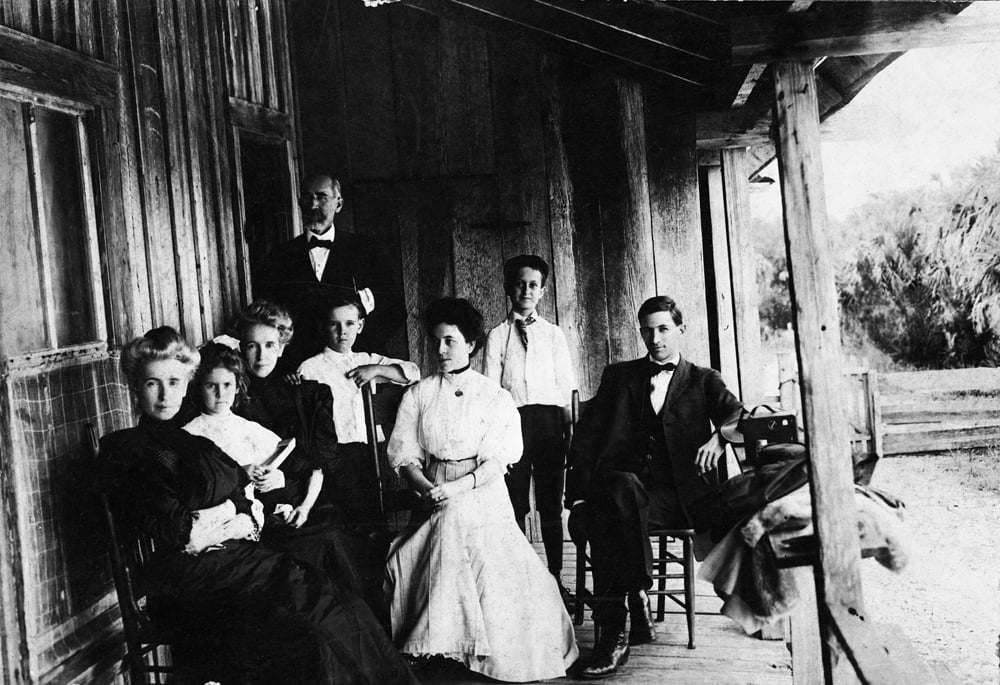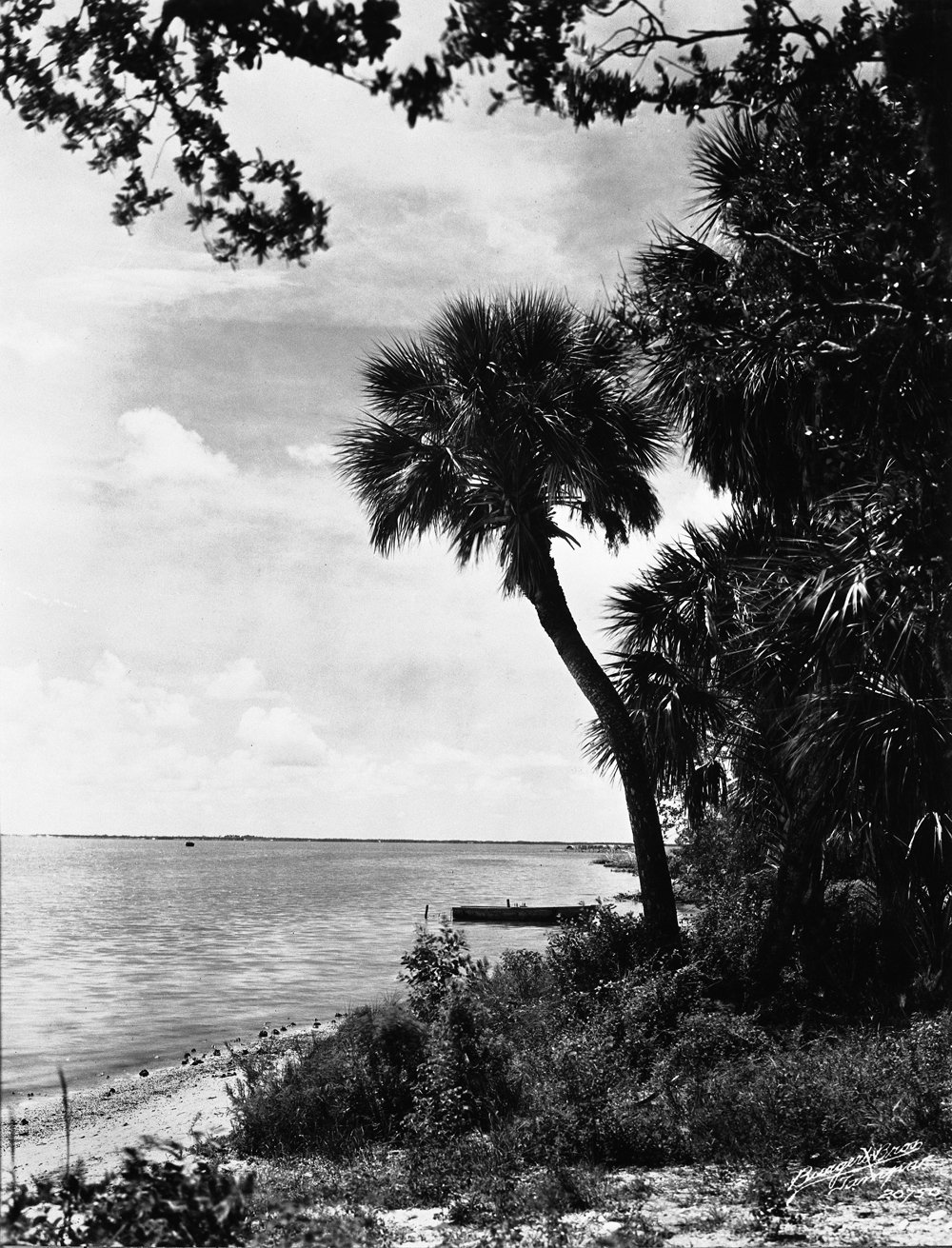Dense mangroves surrounded me as I paddled along the quiet lagoons and mangrove islands of St. Petersburg’s Weedon Island Preserve in a rented canoe. Lost from the everyday world, I enjoyed the solitude.
It seemed as though I could well have been drawn back to a time when Florida’s first inhabitants, called Paleo-Indians by archaeologists, came to this area more than 12,000 years ago. Or I could have been transported to a time around 1,300 to 2,500 years ago, when people of the prehistoric Manasota culture inhabited the northern end of Weedon Island, where a small coastal village has been excavated. Their pottery remains date to the period between 300 and 500 BCE. This site, which is listed on the National Register of Historic Places, is the basis of the “Weeden Island Culture” (an alternate spelling) that archaeologists say once extended from the central Gulf Coast area into north Florida, Georgia and Alabama.
Although Spanish explorers entered the central Gulf Coast in the early 1500s, there is no evidence that they interacted with the Manasota people, as no artifacts of European design have ever been found among the remains of the Indian mounds and middens (shell mounds containing archaeological remains) from that period.
It had been a pleasant couple of hours, but checking my watch, sadly it was time to take my rented canoe back. With my canoe checked in, I walked a short trail to the Weedon Island Preserve Cultural and Natural History Center.

As seen in the Weedon Island Preserve Cultural and Natural History Center
The center was designed with the help of Native Americans and keeps with their traditions. For example, the orientation of the center follows the points of the compass, with the entrance facing towards the east. A curved wall represents the remarkable pottery of the area’s early inhabitants. The center is full of displays, many of them interactive, telling about the history and ecosystem of the preserve.
I exited the center and came upon the fenced-in ruins of a building. Only a corner, about four feet high, remained standing and was tiled on the inside. A small sign identified it as a restroom. The general floor plan was still visible and a number of other signs dotted the area, detailing what each space represented. According to a signpost nearby, this was the remains of the Grand Central Airport, also known as Sky Harbor. This area was the waiting room and control tower for the airport.

Weedon Island earned its name from Dr. Leslie Washington Weedon and his wife Blanche Henderson Weedon, probably the island’s most notable owners. Blanche was deeded the property in 1898 by her father, William B. Henderson, as a wedding present. Henderson had been a Confederate officer in the Civil War, and used his war bonds to buy the property in 1886. His son-in-law, Dr. Weedon, already enjoyed a national reputation for his research on yellow fever by the time he married Blanche. The Weedons built their house on top of an Indian shell mound that is believed to have been 400 feet across and 40 feet tall. The house was used as a weekend and holiday destination, and a strip of land was cleared for an orange grove and grapefruit trees. Today, the only trace of the grove is the occasional grapefruit tree that still struggles to grow in the wild hummocks.
The Weedon family sold its property to a land speculator and developer named Eugene M. Elliott in 1923, who tried to use the island’s prehistoric inhabitants as a draw to sell parcels of land. He actually planted false artifacts into one of the island’s shell mounds in an attempt to lure the Smithsonian Institution to the site. Even though the Smithsonian’s representative, J. Walter Fewkes, knew right away that the artifacts were fake, he took an interest in excavating the site, and by 1924 more than 400 human skeletons were found and removed.
Around 1930, Hollywood discovered the area and the San Remo was turned into a movie studio, but when it burned down, the new Sun Haven Studios was built nearby. The studio made three movies with notable actors of the time, and local people became film extras. After a couple of years, Hollywood lost interest in the area, the studio was closed due to back taxes owed, and the movie era on Weedon Island came to an inglorious end.
Grand Central Airport opened on Weedon Island in 1929. On January 27, 1931, the Eastern Air Transport (predecessor of Eastern Airline) moved its headquarters here, making it a very busy place. During the Second World War the airport was converted to military use. Eventually the airport, which had become known as Sky Harbor, lost its prominence to Albert Whitted Airport, which was owned and operated by the city of St. Petersburg, and closed its doors for good. Before long the abandoned airport became a victim of vandals and time. Eventually even the hangar fell to progress. The only evidence of the once-busy airport are the sad remains I saw earlier.

In 1972, Weedon Island was added to National Register of Historic Places. The state of Florida purchased the land in February of 1974, and gave birth to the preserve. The first Florida park rangers were stationed at the Preserve in 1979. Then on December 28, 1980, Weedon Island State Preserve officially opened to the public.
In 2001, a 40-foot dugout canoe was discovered on Weedon Island by a local man. At the time, it was believed the dugout could be as old as 11,000 years. It wasn’t until 2011, when it was finally unearthed, that carbon dating indicated it was built sometime between 690 and 1000 AD. It was in a sad state of decay, but every effort was made to preserve the remains, and the canoe can now be seen at the Weedon Island Cultural Center.
Whether you come to Weedon Island to paddle the kayak trails, walk the preserve’s trails and boardwalks, or just to explore the cultural center, it will be time well spent.

Weedon Island Preserve is located at 1800 Weedon Dr. NE, St. Petersburg, FL 33702. The Cultural and Natural History Center is open Thursday through Saturday, 10 am – 4 pm. For more information on the preserve, visit www.weedonislandpreserve.org.
For more information about kayak and paddleboard rentals, please visit https://sweetwaterkayaks.com.



